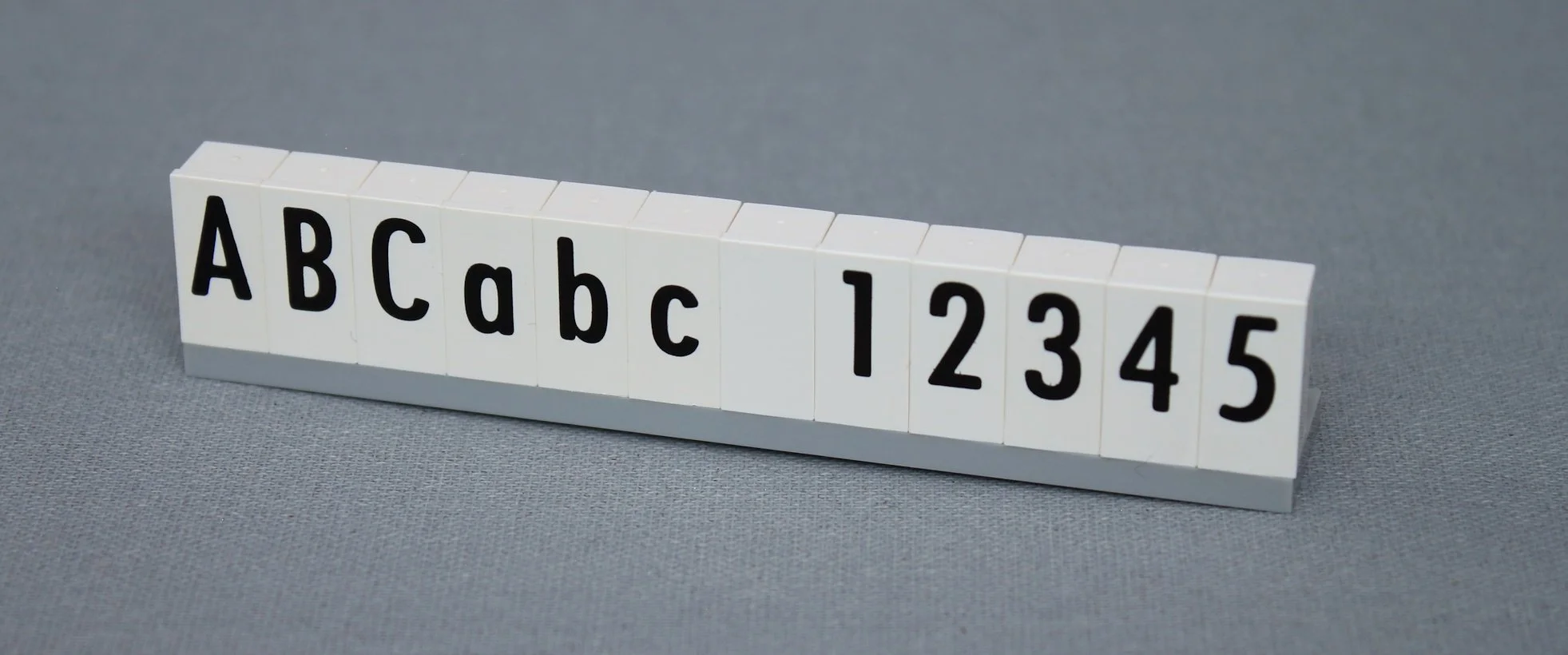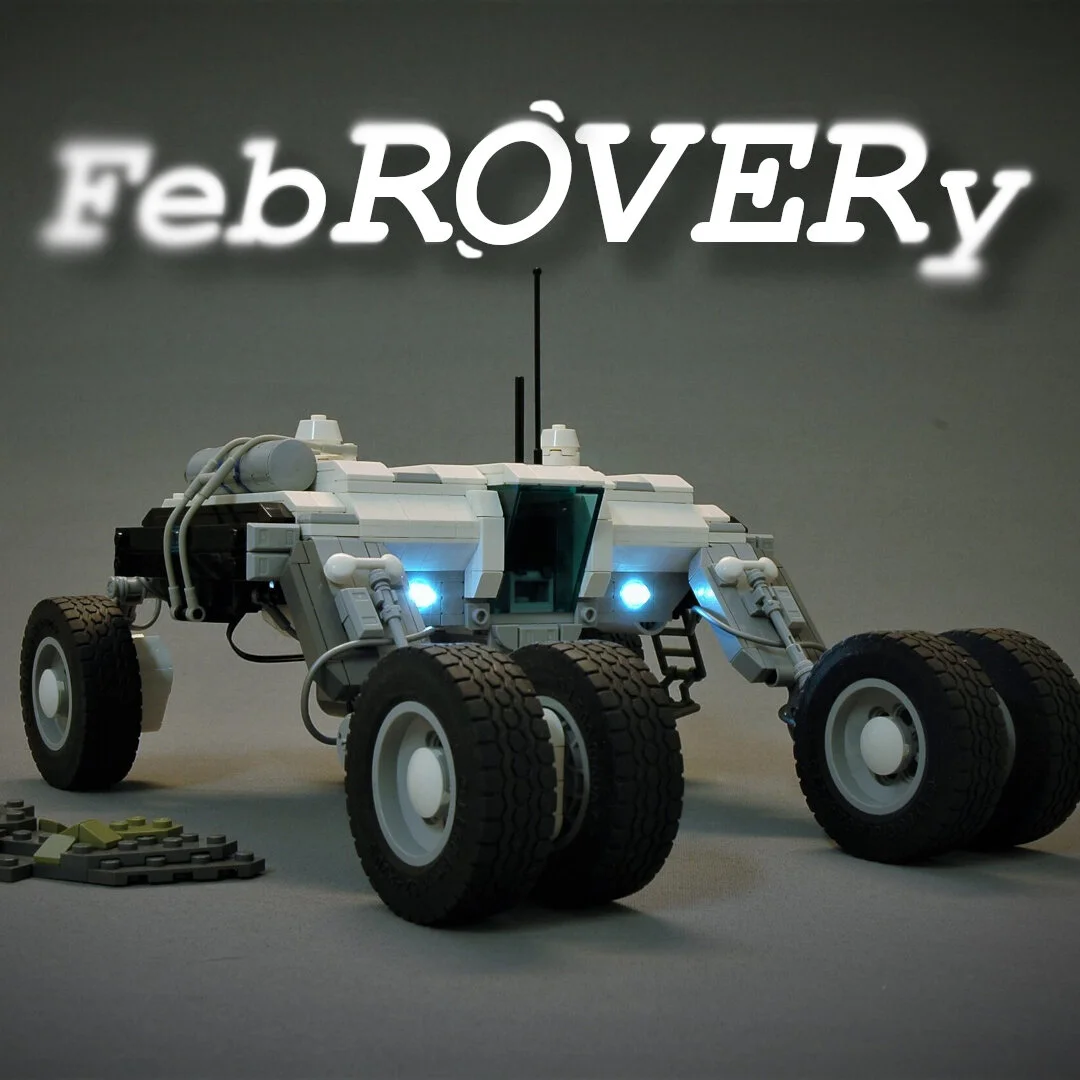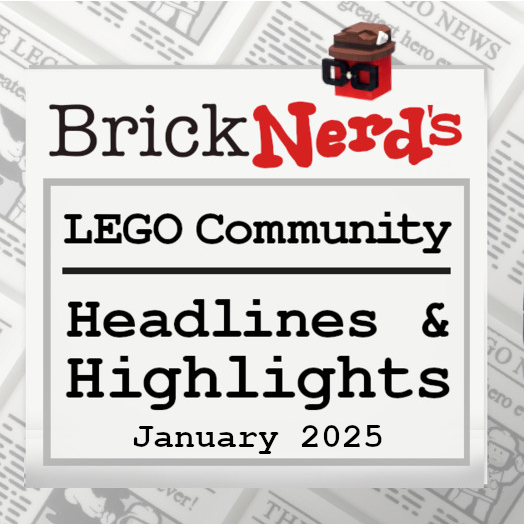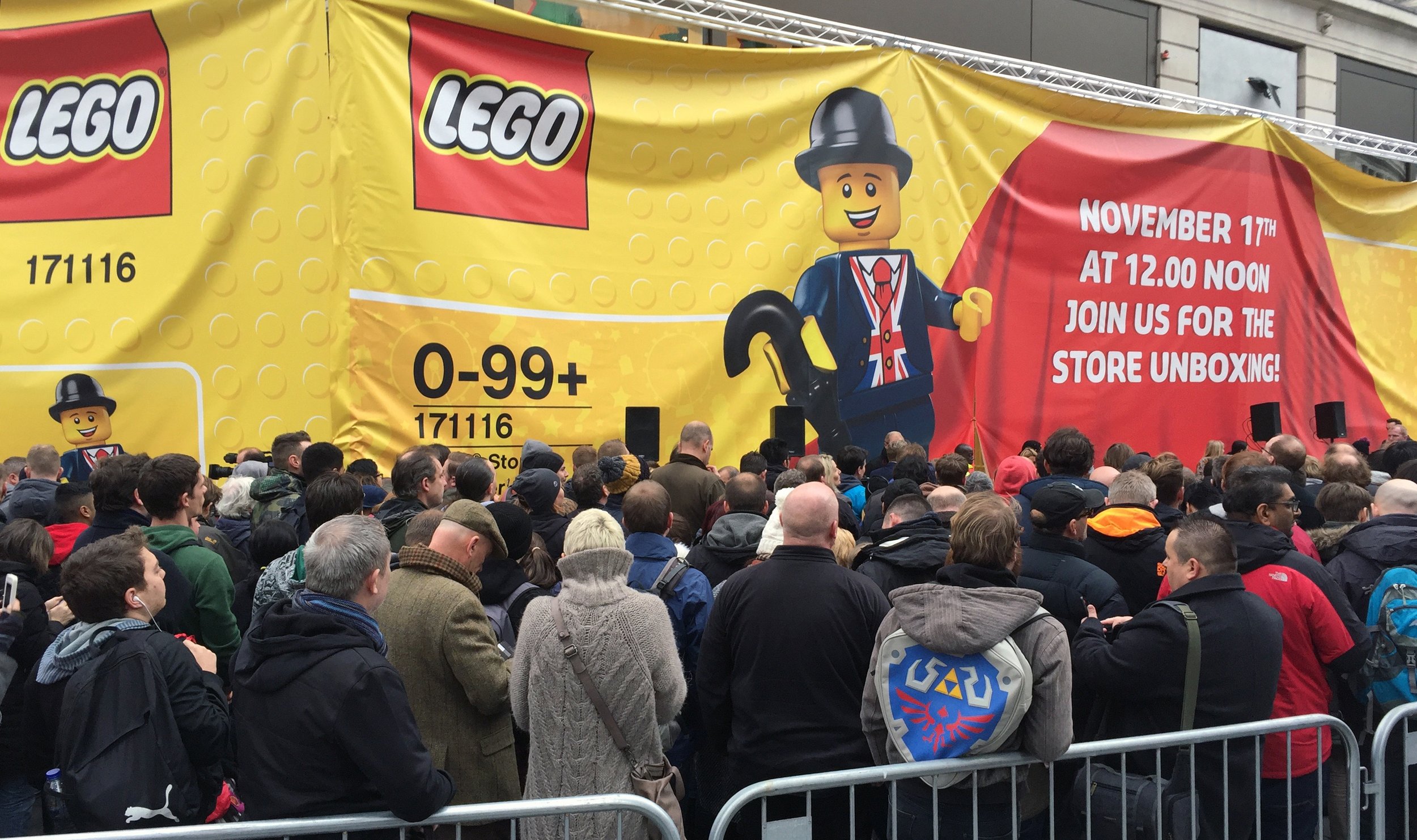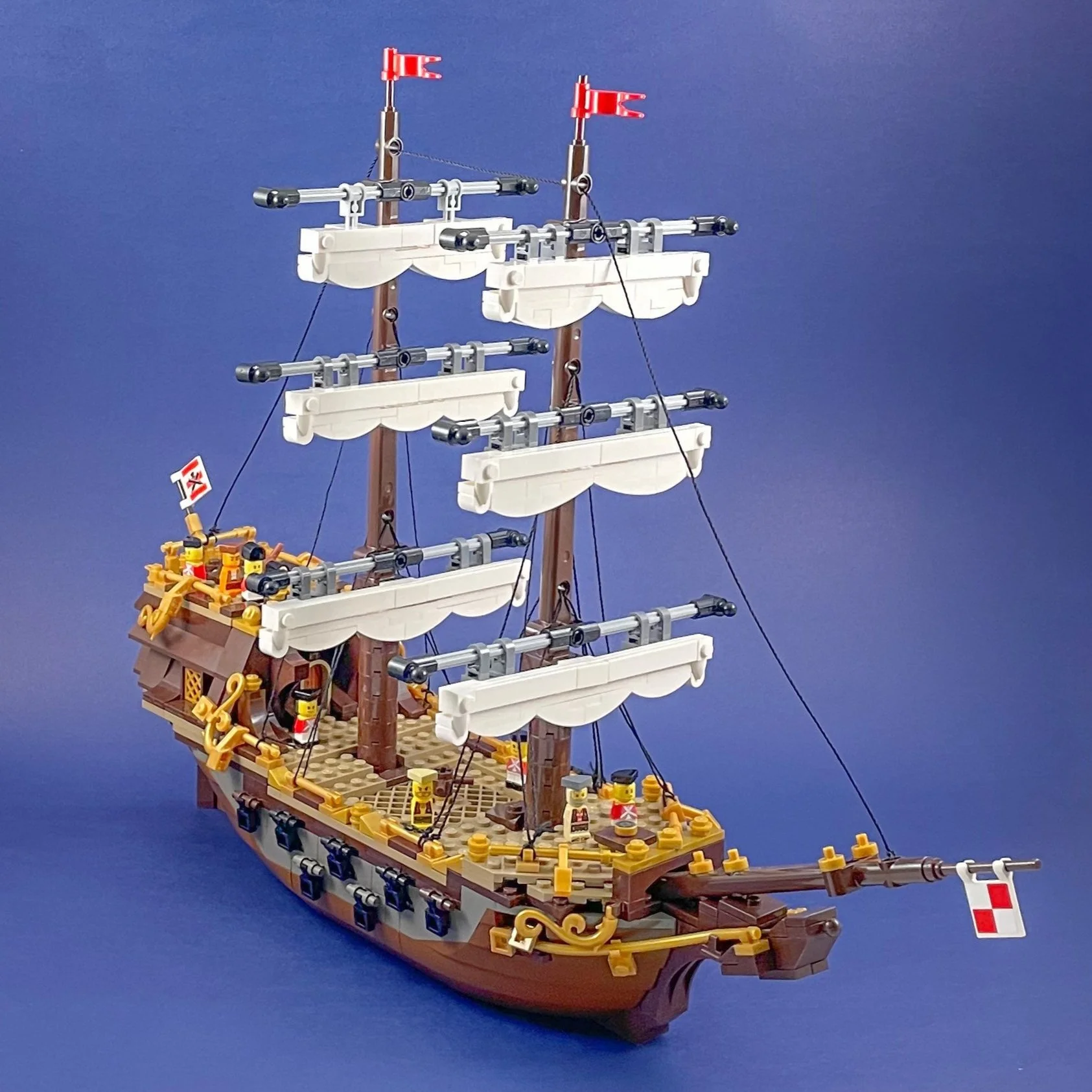Obscure Parts Usage: The Typesetter Tile
/A story about shopping blind bags at conventions and finding LEGO you never even heard of, years later, in your own collection.
When my dark ages ended in 2012 and I discovered BrickLink, there was an almost endless world of weird LEGO to be discovered. There were so many obscure elements and themes released during my dark ages, but also before I was even born, waiting for me to explore.
I spent countless hours just going through entries of Scala, Bionicle, Modulex, Sports, Duplo, Belville and so on, and mostly tried to incorporate the parts I find into my MOCs. This made me fascinated in obscure LEGO elements, an interest that still thrills me to this day.
Social Interaction and LUG Engagement
Another thing that happened when I became an AFOL was that I joined a LUG and started hanging out with other AFOLs. I had never expected the community and social engagement to be such a big part of the hobby.
A few years into my LUG engagement, I read about a mythical LEGO event that was a must for every AFOL; Skærbæk Fan Weekend. This event has been extensively covered by BrickNerd before, but in short, it’s an event in a small town in Denmark where AFOLs from all over the world gather to display their MOCs and have a great time together. It is also an opportunity to talk to representatives from LEGO who regularly show up eager to get and give feedback about their products.
Images via Skaerbaek Fan Weekend
The Backstory
This all started during my first visit to Skærbæk back in 2015. I did not bring any of my own MOCs but I had a great time just walking around, looking at awesome MOCs and meeting people IRL, like Jonas Kramm and Are M. Heiseldal. I had a blast. One of the days I decided to take a closer look at all of the shops spread around the outer walls of the exhibition. These shops are mostly maintained by BrickLink sellers from around Europe. It’s just amazing to look at all the old sets and elements on sale.
Along the walls are stores selling countless old sets and elements. (Image from Brickset)
I wasn’t looking for anything in particular, but I thought it would be cool if I could find some Modulex because I still only had a few parts. After a while I found a guy that had some small plastic bags with Modulex. It was only printed white tiles, and most of them were yellowed and dirty. But still, it was Modulex and I asked the seller about the price. It was reasonable, and I decided to buy some. Then he asked me “Are you really interested in Modulex?” I answered, “Yes?” He then grabbed a big plastic bag from under the table and said, “Please, will you buy this? I can’t sell it. Nobody wants this.” I looked in the bag and it was filled with more small plastic bags of what looked like Modulex tiles with printed letters. I can’t remember the exact price, but I think it was 250 DKK (approx. €35), so of course I bought it.
Later that day, back in the cabin, I opened the bag to see what I bought. It was just countless bags of tiles with letters, numbers and symbols. I was a bit disappointed because I had been hoping for some unprinted tiles and slopes. Mixed with the Modulex were also many bags with some weird parts that didn’t look like Modulex. The dimensions made it look like Modulex, but it was bigger and more like regular LEGO. Still, it didn’t look like LEGO. I actually thought it was some knockoff brand or just plastic letters made for crafting. After returning home, I just put all the Modulex in one bin and the other weird parts in another bin. I didn’t think much more of it.
Fast forward to 2021. Like so many others, I spent a lot of time at home this year. There was a lot of sorting and managing my collection going on, and at one point I decided to add more shelves to my shelving system. That gave me more room for storage and I started arranging my bins. I then stumbled upon those weird letter elements again. “Ok,” I thought, “I need to figure out what these things are!” They were bigger than Modulex and there were holes in them. The dimensions seemed to fit with LEGO. Sure enough. After some testing it was clear that they were at least compatible with the LEGO System. I was still so convinced it wasn’t LEGO so I started googling “Mega Bloks letter bricks” and “LEGO compatible letter bricks” and the like, but to no avail. I couldn’t find anything. I also tried searching for bricks with letters on BrickLink with no result.
My last resort was to ask the AFOL community. I posted in some forums, but there was no reply. I then asked on some LEGO Discord servers and… after only three minutes I got a one word reply from BetaNotus; “DACTA!”
After a little bit of chit-chatting, I found out the letters were from the set 9550 Typesetter's Shop (Composing Set). It was released under the LEGO DACTA brand in 1990. LEGO has historically produced, and still produces, sets that are never made available to the public. They are only available for educational purposes and can therefore only be ordered from certain resellers by schools or preschools. (This is why I was so thrilled when the Braille Bricks were made publicly available.) The sets are used in education and are not treated mildly by the students. After a few years, the sets are worn out and a lot of parts go missing. They are then mostly tossed away as garbage.
Here in my possession, I now had what looked like a complete set of letters from one of these sets. Most letters were even still in MISB condition. My guess is that the Typesetter’s Studio had been bought by some school in Denmark and then ended up in the second-hand market when someone decided to clean out the old storage room. The letters then got confused as Modulex by someone along the way. Maybe that same school also used Modulex for their signs?
The set and letters seem to be extremely rare. There are just a few of them available on BrickLink and they pop up from time to time on eBay and similar sites. I’m just so lucky and happy that these ended up in my “blind bag” and that I then rediscovered them in my own collection! 😅
The Obscure Elements
Now, let’s take a look at these elements and if they can be used for anything except lettering!
The bricks are actually considered tiles in the Bricklink database. That’s why I didn’t find them when I searched for bricks. I will henceforth refer to them as “Typesetter tiles.” They are 2.5 plates high, they have only been produced in white, they don't have studs, and they have a hole on the side. The profile is square-shaped. That’s probably why it looked like Modulex at first glance. Also, the element is ever so slightly shorter than a regular brick, which makes me think this element is actually not a 2x1 tile but is supposed to be treated as a 1x1 tile that is 5 plates high.
There is also a small lip on the opposite side of the hole. I’m guessing this design choice is to allow for easy detachment when the students need to replace the letters for a new word. I find it a bit annoying though. It limits the usability. Imagine how nice it would have been if it was just completely flat!
This image shows the spacing that occurs when using the elements.
SNOT Applications
Because of its dimensions, it comes in handy in some circumstances, like when you want to hide the small edge on a slope:
or for getting smooth transitions:
Or why not use it for stairs:
Hiding studs
As I mentioned in a previous article, I like to make SNOT seamless and make sure studs are hidden. The Typesetter tile can be used for that.
But because it is 5 plates tall, its uses are a bit limited though.
Corners
It could also be used for joining studs that meet in a corner like the image above shows, but you will always get that small groove with the lip sticking out.
Detailing
Ok, let’s try putting that annoying lip to some use instead!
Building with the element in different arengements can produce patterns and structures. Let’s revisit that corner. Here’s an idea:
It could also be used for patterns in floors or walls:
Mixing the typesetter tile with regular tiles can produce patterns like this:
Could they perhaps be used as floor tiling for a bathroom? Not very practical though :)
My MOC Using the Typesetter Tile
When I look at this element, it just screams at me to be used for one particular thing: piano keys.
I started building something based on the amount of unprinted tiles I had. There was no way I would be able to build a piano with a full set of keys, but I had enough to build three octaves. I have seen such pianos. They are called “mini pianos” or “child’s pianos.” I decided that I would use 1x5 Modulex tiles for the black keys. This is the construction I ended up with:
After three days of intense building, this is the final result:
The Typesetter tile is a perfect fit, especially in white. You never know what parts you may use for a random grab bag purchase, but this piano is certainly a way to honor them.
I hope you enjoyed this little story about some obscure parts and my analysis of them. Do you think you will find any other uses for them? Please tell me what you think in the comments!
Do you have any obscure parts you have used in a MOC? Let us know below!
Do you want to help BrickNerd continue publishing articles like this one? Become a top patron like Charlie Stephens, Marc & Liz Puleo, Paige Mueller, Rob Klingberg from Brickstuff, John & Joshua Hanlon from Beyond the Brick, Megan Lum, Andy Price, Lukas Kurth from StoneWars, Wayne Tyler, Monica Innis, Dan Church, and Roxanne Baxter to show your support, get early access, exclusive swag and more.









